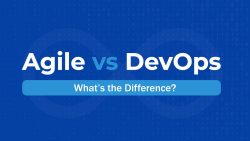Cost-Benefit Analysis of IT Staff Augmentation: What You Need to Know

In the rapidly evolving tech industry, businesses constantly seek the most efficient ways to scale and innovate. IT staff augmentation, a flexible strategy for expanding your team’s capabilities without the overheads associated with traditional hiring or the distances involved in outsourcing, has become a go-to solution. This blog delves into the cost-benefit analysis of IT staff augmentation, providing insights to help businesses weigh its advantages against other models.
Understanding IT Staff Augmentation
IT staff augmentation is a model where businesses temporarily hire skilled tech professionals to supplement their in-house teams. Unlike traditional hiring, this approach allows companies to add specific skills on an as-needed basis. It differs from outsourcing in that augmented staff work alongside the in-house team, offering more control and collaboration.
The Costs: Investment vs. Expense
1. Recruitment and Onboarding: Staff augmentation reduces the time and cost of recruitment. While there’s an upfront fee for using an augmentation service, it eliminates the lengthy processes and expenses associated with advertising roles, interviewing candidates, and onboarding new hires.
2. Flexibility and Scalability: The flexibility to scale your team up or down based on project needs means you only pay for the skills when you need them. This scalability can lead to significant cost savings over the rigid structure of permanent hires.
3. Overhead and Infrastructure: Augmented staff typically work remotely or are provided for by the augmentation partner, reducing the need for additional office space, equipment, and resources that permanent employees would require.
The Benefits: Strategic Advantages
1. Access to Specialized Skills: IT staff augmentation gives businesses access to a global talent pool with specialized skills that might not be available or affordable locally. This access can be a game-changer for projects requiring niche expertise.
2. Increased Productivity: With staff augmentation, businesses can quickly fill skill gaps, ensuring projects proceed without delays. Augmented staff can also bring fresh perspectives and best practices, boosting innovation and productivity.
3. Enhanced Flexibility and Control: Unlike outsourcing, where an external company manages the project, staff augmentation allows businesses to retain control over their projects. This setup ensures that the augmented staff align with company culture and project objectives, enhancing teamwork and outcomes.
4. Risk Mitigation: The ability to quickly adapt team size and composition with staff augmentation helps businesses respond to market changes and project demands more effectively, mitigating the risk of overstaffing or skill shortages.
Comparing to Traditional Hiring and Outsourcing
1. Traditional Hiring: While offering long-term stability, traditional hiring involves higher costs (salaries, benefits, and infrastructure) and less flexibility in managing workforce size and skill sets in response to project cycles.
2. Outsourcing: Outsourcing can reduce operational costs and delegate project management, but it may come at the expense of control, collaboration, and sometimes, quality, due to differences in vision, culture, and time zones.
Conclusion: Maximizing ROI with Staff Augmentation
For businesses navigating the complexities of scaling and innovating in the tech sector, IT staff augmentation offers a balanced blend of flexibility, control, and access to specialized skills. By understanding the cost-benefit dynamics laid out above, companies can make informed decisions that align with their strategic goals and project needs, ultimately maximizing ROI in an increasingly competitive landscape. Whether augmenting your team for a specific project or as part of a broader strategy to adapt to market demands, staff augmentation presents a compelling case for businesses aiming to stay agile and innovative in 2024 and beyond.







